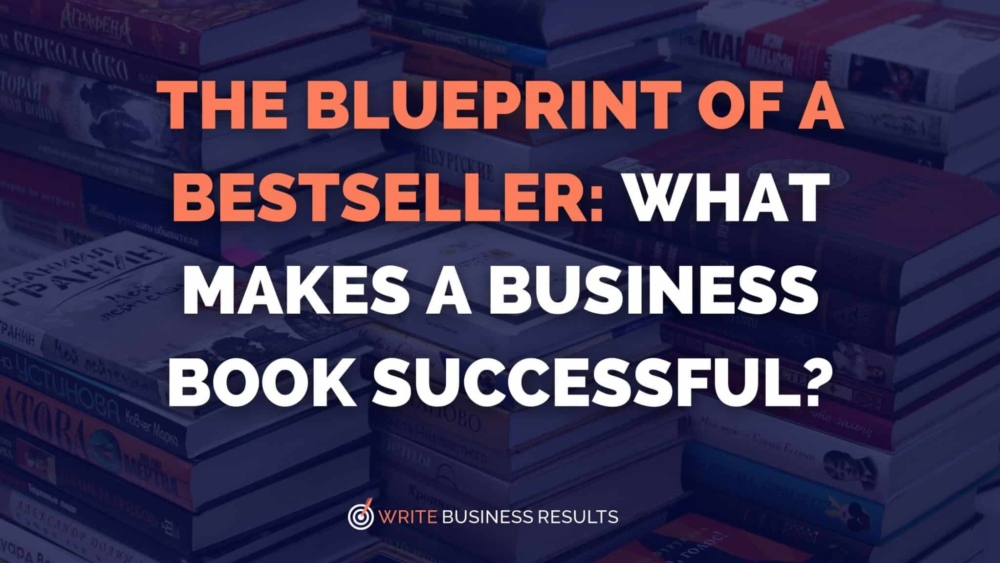By The WBR Team
What transforms a business book into a bestseller? Is it the storytelling? The marketing?
While there’s no absolute formula, several themes and strategies underpin every successful book launch, regardless of its niche or genre.
That’s why, in this blog, we’re dissecting the most successful business books over the past decade to discover the key elements that have propelled these works to the top of the reading lists and the Amazon charts.
The contenders
1. The Lean Startup by Eric Ries: This transformative work revolutionised the way startups approach product development with its emphasis on rapid experimentation and customer feedback.
2. Thinking, Fast and Slow by Daniel Kahneman: This Nobel Prize-winning exploration of human psychology delves into the cognitive biases that influence our decision-making, offering valuable insights for business leaders.
3. Hooked: How to Build Habit-Forming Products by Nir Eyal: This insightful guide explores the psychology of habit formation and provides a framework for designing products that capture and retain user attention.
4. The Innovator’s Dilemma by Clayton M. Christensen: This seminal work examines the challenges that established companies face when disruptive technologies emerge, providing strategies for navigating innovation and staying ahead of the curve.
5. Start with Why: How Great Leaders Inspire Everyone to Take Action by Simon Sinek: This inspiring book argues that the most successful leaders communicate their “why” – their purpose, cause, or belief – before explaining what they do or how they do it.
Common themes among these successful books
1. Relevance to current trends and actionable advice
Each book addresses a pressing issue or trend in the business world, offering timely and impactful solutions and insights. More importantly, the authors don’t just diagnose problems; they provide practical strategies and tools that readers can implement in their own businesses.
For example, Eric Ries’s The Lean Startup addresses the growing need for agility and customer-centricity in startups and provides practical frameworks and tools for implementing the Lean Startup methodology.
We see the same thing in Hooked, where Nir Eyal explores the increasing need for businesses to create products that capture and retain user attention and provides a framework for designing habit-forming products based on psychological principles.
2. Engaging writing style
The books are written in a clear and accessible style, making complex concepts understandable and engaging for a broad audience.
For example, Daniel Kahneman’s Thinking, Fast and Slow combines academic rigour with accessible language, making complex psychology relatable.
3. Compelling storytelling
All of these books weave in personal anecdotes and case studies, making the abstract concepts more relatable and memorable.
4. Focus on human connection
Regardless of their specific topic, these books emphasise the importance of understanding human psychology, building relationships, and inspiring action.
Marketing strategies
1. Building a strong platform
The authors of these books have established themselves as thought leaders in their respective fields, actively engaging with their audience through social media, speaking engagements, and online courses.
For example, Nir Eyal has taught university courses, given speeches, and published books about the intersection of psychology, technology, and business. His writing has also appeared in multiple publications, such as Harvard Business Review, The Atlantic, and Psychology Today.
2. Leveraging social proof
Testimonials, endorsements, and reviews from respected figures in the business world lend credibility and generate buzz. For example, Simon Sinek’s Amazon book blurb features a great testimonial from Steven Bartlett, investor and host of The Diary of a CEO podcast:
“One of the most incredible thinkers of our time; someone who has influenced the way I think and act every day”
3. Creating a community
The authors foster a sense of community around their work, encouraging readers to connect and share their experiences.
Simon Sinek’s famous TED Talk on the importance of “why” has been viewed millions of times, and he maintains a solid social media presence to connect with his audience. He also offers workshops and training programs that help organisations embed the “Start with Why” philosophy into their culture.
Clayton Christensen also created a following among business leaders and academics, fostering a community keen on exploring disruptive innovation.
Actionable tips
Having analysed these highly successful business books, here are some actionable tips you too can incorporate into your book creation journey.
a. Identify a niche
Focus on a specific topic or challenge that resonates with a well-defined audience. Offer fresh insights and perspectives on existing challenges, providing valuable solutions that stand out.
b. Build your platform
Establish yourself as an expert in your field by actively participating in online communities, speaking engagements, and social media.
c. Write for your ideal reader and focus on providing value
Understand your readers’ needs, challenges, and aspirations, and tailor your content accordingly. Offer practical insights and actionable advice that your readers can implement in their lives or businesses.
d. Market your book effectively
Utilise social media, online communities, and other marketing channels to reach your target audience. If possible, collaborate with other thought leaders and industry experts to expand your reach and amplify the impact of your message.
But don’t stop there. Track key metrics and adapt your marketing strategies based on data-driven insights. This way, you can ensure you’re always making the right move.
Conclusion
While there’s no absolute formula for creating a bestseller, by emulating the strategies employed by these five powerhouse business books and incorporating the tips outlined above, you can significantly increase your chances of achieving the same level of impactful success and widespread recognition.
As the market for business books continues to evolve, it’s crucial to stay informed and adapt your approach accordingly. Monitor current trends, emerging technologies, and evolving reader preferences to ensure your message remains relevant and impactful.
If you’d welcome professional support with creating a compelling business book, schedule a free Clarity Call today to find out how our team of experts can help.
